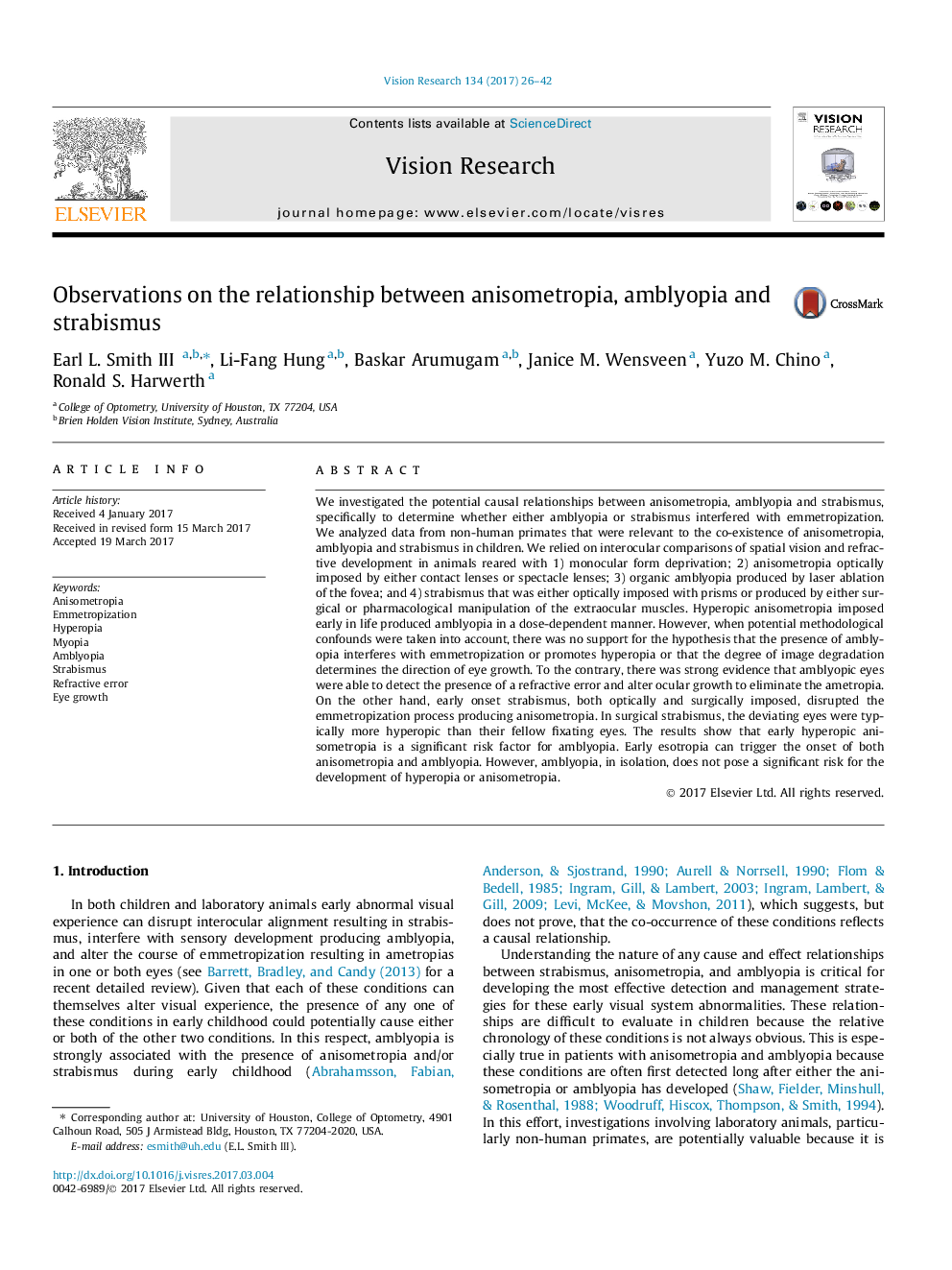| Article ID | Journal | Published Year | Pages | File Type |
|---|---|---|---|---|
| 5705878 | Vision Research | 2017 | 17 Pages |
Abstract
We investigated the potential causal relationships between anisometropia, amblyopia and strabismus, specifically to determine whether either amblyopia or strabismus interfered with emmetropization. We analyzed data from non-human primates that were relevant to the co-existence of anisometropia, amblyopia and strabismus in children. We relied on interocular comparisons of spatial vision and refractive development in animals reared with 1) monocular form deprivation; 2) anisometropia optically imposed by either contact lenses or spectacle lenses; 3) organic amblyopia produced by laser ablation of the fovea; and 4) strabismus that was either optically imposed with prisms or produced by either surgical or pharmacological manipulation of the extraocular muscles. Hyperopic anisometropia imposed early in life produced amblyopia in a dose-dependent manner. However, when potential methodological confounds were taken into account, there was no support for the hypothesis that the presence of amblyopia interferes with emmetropization or promotes hyperopia or that the degree of image degradation determines the direction of eye growth. To the contrary, there was strong evidence that amblyopic eyes were able to detect the presence of a refractive error and alter ocular growth to eliminate the ametropia. On the other hand, early onset strabismus, both optically and surgically imposed, disrupted the emmetropization process producing anisometropia. In surgical strabismus, the deviating eyes were typically more hyperopic than their fellow fixating eyes. The results show that early hyperopic anisometropia is a significant risk factor for amblyopia. Early esotropia can trigger the onset of both anisometropia and amblyopia. However, amblyopia, in isolation, does not pose a significant risk for the development of hyperopia or anisometropia.
Related Topics
Life Sciences
Neuroscience
Sensory Systems
Authors
Earl L. III, Li-Fang Hung, Baskar Arumugam, Janice M. Wensveen, Yuzo M. Chino, Ronald S. Harwerth,
